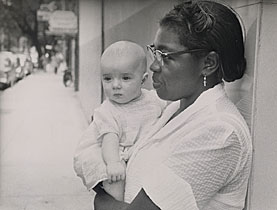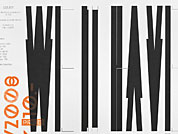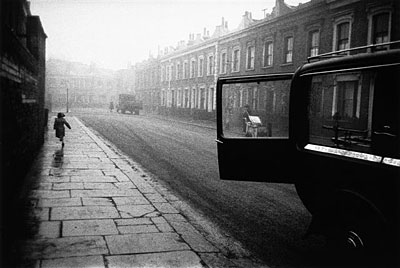Swiss businesses “not aware” of young talent

The quality of young designers' work has improved in recent years, but Swiss firms are largely ignorant of their talents, design specialists say.
“The general quality of new design work in Switzerland has increased,” Patrick Reymond, a designer at Atelier Oï studio, told a news conference earlier this week. “You can see that when you compare the work coming out of Swiss design schools and [the work] presented for the prize.”
But entrepreneurs need to wake up and invest in creativity, he said.
“Swiss firms are too cautious and afraid to take risks. They want to first make sure a designer has a reputation before taking them on,” he told swissinfo.ch.
Reymond was president of the panel of national and international experts set up by the Federal Culture Office to elect the winners of the national design prize, which has been awarded every year since 1918.
In tune with reality
This year 239 upcoming designers submitted work for the competition. The panel eventually narrowed the list down to 19 artists for 17 different projects – half of which were for graphic design.
Each winning project received either SFr25,000 ($24,830) in cash, or six months’ work experience at a famous design studio or London workshop. Over half of this year’s winners opted for the latter options.
Patrizia Crivelli, head of design at the Federal Culture Office, who has overseen the awards for the past 12 years, also felt standards were rising.
“Those applying, even at diploma level, know there is a market out there so there is less fantasy,” she said. “It’s much more in tune with reality – and that’s a good thing.”
“But Swiss businessmen are not aware of young designers,” she lamented. “Many have to go abroad to be discovered before coming back to Switzerland.”
Commercial success
“Winning this prize is really motivating,” explained Stéphanie Baechler, a textile designer from St Gallen. “Without this prize I wouldn’t be able to afford to continue my studies.”
Baechler’s delicate, vibrant fabrics mix romanticism with modern digital motifs, such as electronic diodes, circuit boards and coloured cables.
Paris-based fashion designer Joy Ahoulou has started to taste commercial success.
His 19th-century dandy men’s collection featured at the Paris Fashion Show and several pieces were snapped up by Japanese and Italian fashion buyers.
But it has not been easy, he said.
“Starting out without a ready-made network of contacts is tough,” said Ahoulou.
Reymond agreed: “Finding a partner and making your ideas a reality is the major challenge.”
But sometimes natural talent is helped along by a dose of good luck and “who you know”.
Winterthur-born designer Florian Kräutli studied at the Eindhoven Design Academy in the Netherlands, where he developed a magnetic curtain that can be modelled into different shapes.
After his design appeared on a blog belonging to US rapper Kanye West, Dutch design label Droog came banging at his door.
School landscape
In Switzerland young budding designers have a choice of institutions where they can study.
The Ecole cantonale d’art de Lausanne (Ecal) is well known for photography and graphic and product design. Basel (fashion), Zurich (product and graphic design) and Lucerne (textile) schools also have good reputations.
“The landscape has evened out,” said Crivelli. “There was a time when Ecal was the only place people talked about, but each school now has departments that are really strong.”
While rooted in the same traditions as their predecessors – high quality, precision and functionality – today’s young designers have a more playful, humorous approach, she noted.
New Swiss design is very hard to categorise, said Reymond, but it’s definitely not confined by Swiss borders.
“Young people are much more open to what’s happening outside Switzerland; they can’t simply hang around for what might happen here.”
Simon Bradley in Lausanne, swissinfo.ch
In addition to the national design competition, the Federal Culture Office awarded the 2009 Grands Prix Design Awards to 85-year-old Swiss photographer Robert Frank, textile designer, musician and artist Christoph Hefti, Zurich designer Ursula Rodel and the Thut Möbel furniture design company.
The awards, worth SFr40,000, are given to people or companies that have made an important contribution to Swiss design at both national and international level.

In compliance with the JTI standards
More: SWI swissinfo.ch certified by the Journalism Trust Initiative







You can find an overview of ongoing debates with our journalists here. Please join us!
If you want to start a conversation about a topic raised in this article or want to report factual errors, email us at english@swissinfo.ch.